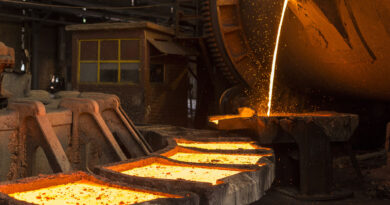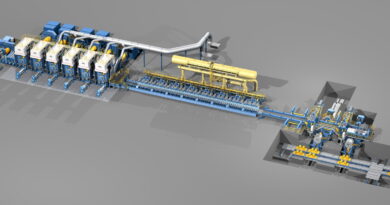Life cycle thinking: key to every aspect of sustainability
To understand the environmental performance of a product, its entire life cycle needs to be considered. A life cycle assessment (LCA) of a steel product looks at resource and energy consumption and emissions to air, water and land.
This is assessed from the raw material extraction stage to its end-of-life stage, including reuse and recycling.
worldsteel provides global and regional LCI data for 17 steel products, from hot rolled coil to plate, rebar, sections and coated steels. This data enables product designers to make informed material choices.
worldsteel’s buildLCA and autoLCA tools help determine the environmental performance of steel in the construction and automotive sectors compared to alternative materials.
An LCA approach must be considered for the development of appropriate legislation to ensure that the true environmental impact of products is assessed correctly and consistently, avoiding unintended consequences.
The LCI data quantifies ‘cradle to gate’ inputs (resources, energy) and outputs (environmental emissions) of steel production from:
- the extraction of resources and use of recycled materials,
- production of steel products to the steelworks’ gate,
- reuse and remanufacturing, and
- end-of-life recovery and recycling of steel.
Construction, automotive and packaging are examples of just three market sectors where life cycle thinking is being incorporated into regulations and standards, but a more widespread application is crucial.
CONSTRUCTION
- New grades of Advanced High-Strength Steels (AHSS) can reduce total vehicle weight by 8-10% compared to conventional steel.
- Today vehicle body structures can contain more than 50% AHSS.
- Electric steel is an essential material in the construction of generators and motors for electric vehicles.
- Lightweighting, safety, battery protection and cost reduction are the main reasons for automakers to select steel for the body of electric cars.
- The future of steel is expected to enable even lighter yet stronger vehicle structural designs, thereby further minimizing a vehicle’s carbon footprint from a life cycle perspective.
AUTOMOTIVE
- Global steel demand for construction is expected to rise by 2.1% every year for the next 15 years. Steel offers the highest strength-to-weight ratio of any building material.
- Use of Advanced High-Strength Steel enables high rise buildings to be built with 50% less steel.
- Steel buildings are increasingly designed to be reused.
- CO2 emissions savings from reusing steel within buildings are estimated at 1 to 1.5 kg CO2 /kg steel.
PACKAGING
- Steel is the most recycled material in the world. 82.5% of steel packaging is currently recycled in the EU.
- A recycled steel can be back on the shelf as a new can within 60 days.
- Each steel can recycled saves about 1.5 times its weight in CO2.
- The weight of steel cans has been reduced on average by 33% in the last 20 years.
- Steel packaging is an unrivalled solution for shelf life, transport, storage, use and recycling.
New generations of steel continue to be developed that enable steel users to implement more durable, lightweight, safe and carbon-lean designs, enabling them to be more sustainable. Steel applications can help us to meet challenges such as climate change, poverty, population growth, water distribution and renewable energy generation.




